You are here
Flora of Zhongar-Alatau Park.
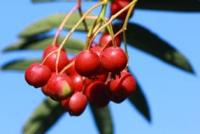
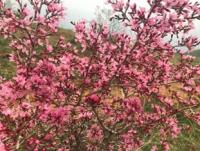
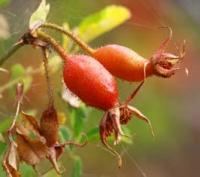
Botanical tours in Zhongar-Alatau Park.
“No, I hear another sound; he in advance
He tells me about death while I’m still alive:
Either from apple trees or from pears standing in a clearing,
The dead fruit falls into the grass."
Zhemchuzhnikov A. M. “Autumn in a Swiss village.” 1978.
Photo tours to Zhongar-Alatau Park.
In the monograph by V.P. Goloskokova (1984) in the flora of the Zhetysu Alatau there are 112 families, 622 genera and 2168 plant species, of which 76 are endemic, found only in this ridge. At least 75% of all species growing in the Zhetysu Alatau are represented in the park; this is more than 1,600 species.
To date, on the territory of Zhongar Alatau State National Park, the department of science, information and monitoring has identified 754 species of higher vascular plants from 313 genera and 81 families. Endemic plant species growing in the territory of Zhongar-Alatau Natural Park:
According to V.P. Goloskokov (1984) in the flora of Zhetysu Alatau there are 73 species of plants listed in the Red Book of the Republic of Kazakhstan. To date, researchers from the Department of Science, Monitoring and Information have identified 26 species from 23 genera and 17 families.
On the territory of the Zhongar-Alatau National Park there are 15 monitoring sites for monitoring rare plants, where the department conducts scientific research on them. According to V.P. Goloskokov (1984) and based on materials from the herbarium of higher plants of the Institute of Botany, the flora of Zhetysu Alatau includes 112 families, 622 genera and 2168 species.
At least 75% of all species growing in the Zhetysu Alatau are represented in the park. As a result of inventory work, according to the Chronicle of Nature, to date, 845 species have been identified, which are classified into 112 families and 353 genera.
Of these, lower plants, i.e. algae, are divided into 28 families, 74 species. Lower plants have been little studied and require additional research and study. Higher plants include 771 species, uniting 84 families, 320 genera. The number of endemic plants is 56 species.
In the park there are 26 rare and endangered species listed in the Red Book of the Republic of Kazakhstan, and one species of Sivers apple tree (Malus sieversii) is included in the IUCN (International Union for Conservation of Nature) Red List.
List of rare and endangered and endangered species listed in the Red Book of the Republic of Kazakhstan found in the territory of the Zhongar-Alatau Natural Park. To date, alien plant species have been registered on the territory of the Zhongar-Alatau Natural Park.
All of them have successfully naturalized in the natural and climatic conditions of the area, and are capable of active renewal, resettlement and introduction into natural communities of varying degrees of disturbance.
They suppress the processes of natural regeneration of forest-forming species of these forests. According to modern floristic and taxonomic concepts, the number of naturally growing tree species in the Dzhungar Alatau is 25, according to natural species of shrubs - 94 species; the share of alien species of shrubs is 7.4% and alien species of trees make up 48% of the diversity of naturally growing species. The penetration of alien species into a territory of any scale entails a number of environmental consequences.
Of course, not all introduced species have a noticeable impact on the ecosystems of their new habitat: a number of invaders do not reach noticeable numbers and biomass; other species “fit” into communities without significantly changing their functions; some
species can significantly restructure an entire ecosystem. The same alien species in different ecosystems of the same region is characterized by different categories of aggressiveness. The category of phytocenotic aggressiveness of an alien species changes over time, which is manifested in the transitions “latent” - “potentially aggressive” - “aggressive”.
Thus, posing a potential threat to the biological diversity of the territory, this topic requires further more thorough research and the organization of constant monitoring. Such monitoring is necessary to determine invasion corridors, establish the rate of penetration of alien species into new ecosystems, predict invasions, and develop preventive measures to control unwanted invaders.
The natural conditions of Zhetysu Alatau are very favorable for the growth of tree and shrub species. Potentially alien species are capable of independently transforming forest phytocenoses. They suppress the regeneration of natural forest-forming species in the wild fruit zone.
For example, all introduced species thrive on the ancestral lands where the Sievers apple tree grows. When conducting further surveys in this direction, the species composition of introduced species will be identified, their places of growth will be determined, aggressiveness will be assessed, and measures will be developed to control the aggression of alien species.
Plant communities of Zhongar-Alatau Park.
The diversity of the flora is determined by the breadth of the range of zonal heights represented in the park. There are 7 altitude zones in the park:
V - high-mountain nival-rock belt - above 3100 meters above sea level;
V - mountain-meadow and meadow-steppe alpine belt - at altitudes of 2700 - 3100 meters above sea level;
V - mountain-meadow and meadow-steppe subalpine belt - 2200 - 2700 meters above sea level;
V - belt of mountain spruce forests, forest meadow steppes - 1700 - 2200 meters above sea level;
V - belt of mountain small-leaved forests, forest meadows, meadow steppes and xeropetrophytic steppes - 1350-1700 meters above sea level;
V - belt of mountain fruit forests - 1200 - 1350 meters above sea level;
V - belt of forb-fescue and forb, red and feather grass steppes - 1000 - 1200 meters above sea level.
High-mountain nival-rock belt 3100 (3200) meters above sea level. For many cryophytes, the line of eternal snow is the upper limit of their distribution. In the area of glaciers there are (Cerastiumlithospermifolium), (Saxifragaoppositifolia, S. flagellaris), (Drabaoreades), (Sibbaldiatetrandra), (Poarelaxa), (Waldcheimiatridactylites), (Thylacospermumcaespitosum), (Oxygraphisglacialis), Erysimumaltaicum), (Melandriumapetalum), (Carexnigricans).
Some of the listed species (Waldheimia, Yurinea, sedge) are confined mainly to moraines. The rest are found mainly among rocks and rocky placers. Modern moraines, located at lower elevations above sea level, are richer in plants.
The projective cover of plants on moraines is 10 - 15%. Here there are groups consisting of one or more species. These are mainly: Kokand onions (Alliumkokanicum) and (A. platyspathum), single specimens (Heleniacorniculata, H. elliptica), large groups of primroses (Primula algida, P. nivalis).
There are scattered rare specimens (Callianthemumangustifolium), (Saussureaschangintana), Swertiamargiata), etc. Lichens and mosses are more common and abundant in the glacial region than flowering plants.
There are places where the rocks are almost completely covered with lichen of various colors and shades. Mountain-meadow and meadow-steppe alpine belt 2700 (2750) - 3100 (3150) meters above sea level. It is represented mainly by cryophytic vegetation.
The vegetation of the western part of the national park consists of cobresia and small herbs, cryophytes, and sometimes steppe meadows. Eedge meadows are distributed mainly on slopes that are more or less gentle and well drained.
The dominant species of this formation is (Kobresia capilliformis). Cobresia meadows are heterogeneous and are represented by cobresia-forb meadows, cobresia meadows with forbs, and pure cobresia associations.
Pure meadows are less common than other associations and occupy convex areas, positive elements of meso- and microrelief. They are more common on southern-facing slopes. The height of the grass stand ranges from 10 - 12 cm to 18 - 20 cm.
The grass stand is very dense. Projective coverage 100%. Only here and there single specimens of other plant species (Polygonumviviparum, Papavercroceum, Leonthopodiumleontopodioides, Thalictrumalpinum) make their way through the very dense cobresia turf.
The cobresia-forb association is observed in more humidified places: depressions, depressions, hollows, and slopes of northern exposure. Forbs make up about half here, sometimes more. Floristically, this association is richer than the previous two. The tiers are well defined.
Among the carpet of cobresia you can find a large number of beautifully flowering species: cold primrose (Primulaalgida), (Swertiamargiata), (Gentianafalcata), alpine aster (Asteralpinus), edelweiss (Leontopodiumochroleucum), violets (Violatianschanica); alpine (Sibbaldiatettrandra), (Potentillanivea), (Carextitovii), (Luzulasibirica, L. spicata).
The rocky-zealous slopes of various steepness and orientations are occupied by small-grass cryophytic meadows with typical representatives: (Sibbaldiatetrandra), (Oxytropislapponica, O. Chionobia), (ThylacospermCaespitosum), (AndrasaceAmbelle). Edelweiss (Leontopodiumleontopodioides), Permulaalgida, (Potentillafreyniana), small petal (Erigeronalpinus), alpine bluegrass (Poaalpina), forget-me-not (Myosotissylvatica), violet (Violaaltaica), (Minuartiakryloviana), etc.
The exposure of the mountain slope is to a certain extent reflected in the floristic composition of the meadow. The composition of the described meadows ranges from 40 to 60 species. More humid habitats are represented by alpine meadows, more often found on the northern slopes in small depressions, on passes, and in small valleys.
Their size is not large, the species composition is varied - there are almost no cereals. Projective coverage 90 - 100%. Of the species found, (Oxygraphisglacialis), (Trolliusaltaicus), (Gageaemarginata), tulip (Tulipaheterophylla), (Cerastiumtianschanicum), (Trisetumaltaicum), (Polygonumnitens), etc. are common.
The vegetation of the eastern part of the high-mountain zone differs from the western part by the significant presence of high-mountain feather grasses (Stipamartinovskyi, S. regeliana) in the floristic list of cobresia meadows.
In small depressions of the relief, sedge swamps with characteristic hummocks are common. Here, as a rule, several sedges are represented (Carexmelanantha, C. parva, C. enervis, C. canescens), and (Parnassialaxmannii) and (Pedicularisviolascens) are also found.
In some places there are phytocenoses with a predominance of (Arctousalpina) and swamps with (Eriophorumscheuchzeri). Wet meadows are composed of grasses and sedges. Among the grasses, the most common are: (Poaattenuata, P.alpigena), (Festucarubra), (Trisetumspicatum), (Phleumalpinum), (Alopecurusalpinus), sedges are represented (Carexparalella, C. melanantha, C. tristis, Luzulapallescens, L. spicata), ( Juncustriglumis).
Small elevated areas are occupied by grass associations, in which the main background is formed by (Festucavalesiaca), (Poapratensis, P. angustifolia). Thus, these are no longer meadows, but steppes, since the dominant species is a typical xerophyte.
Mountain-meadow and meadow-steppe subalpine belt 2200 (2250) - 2700 (2750) meters above sea level. In this belt, both the northern and southern slopes are home to juniper thickets (Juniperus pseudosabina), growing on high-mountain dark-colored peaty soils and occurring both in large impenetrable massifs and in rather sparse areas.
Occasionally there are small areas of moss spruce forest. The coniferous forests of the eastern part are somewhat different from those in the west. The richest part of Zhetysu Alatau is located here. Along with light spruce woodlands, true spruce forests with a dense, closed canopy are often found.
Siberian fir is sometimes mixed with Tien Shan spruce. The canopy density of spruce forests usually ranges from 0.2 to 0.8. On very steep northern slopes with rock outcrops, there are spruce forests with a completely closed canopy, under which a thick moss cover of Thuidiumabietinum is developed.
On less steep slopes with more developed soil cover, less dense spruce forests are found, and under the canopy an undergrowth of shrubs (Rosabeggerana, Rubusidaeus) develops, and single bird cherry trees (Padusracemosa) are found.
The grass and moss layers are poorly developed. The most common are spruce forests with a well-defined undergrowth and a floristically rich herbaceous layer. They are mainly confined to the northwestern and western slopes of gorges in the meridional direction.
The density of trees here is uneven. The undergrowth contains willows (Salixcaprea), rose hips (Rosabeggerana), raspberries (Rubusidaeus), rowan (Sorbustianschanica) and other shrubs. The herbaceous layer is dominated by stoneweed (Rubussaxatilis), and a number of bluegrass species common to mountain forests (Polypodium vulgare, Campanulaglomerata, Solidagovirgaurea, Thalictrumminus, Polemoniumcaeruleum) are also noted.
Another type of spruce forest is confined to ancient terraces of river gorges. These are mainly dead cover spruce forests. The dead litter of fallen pine needles and other fallen material reaches a considerable thickness.
In the undergrowth, raspberries (Rubusidaeus) and needle gooseberries (Grossularia acicularis) were found sporadically. Thuidiumabietinum and Drepanocladus suncinatus are found in the moss cover. The meadow vegetation of the coniferous forest belt in the western part differs from that in the east.
In the west, part of the southern and all northern slopes are covered with meadow vegetation. Vegetation of the river valleys of Zhongar-Alatau Park. The dominant forest-meadow complexes of the river valleys of the Zhetysu Alatau consist of willows, birch, rowan and Tien-Shan spruce, accompanied by a variety of shrubs (Padusracemosa, Rosabeggeriana, Rubusidaeus, Cotoneactermultiflora, etc.).
They alternate with areas of meadows, often steppe. The forests are of a park nature, alternating with meadow spaces. Herbaceous vegetation is represented by mesophilic species of large herbs. These are communities dominated by (Dactylisglomerata).

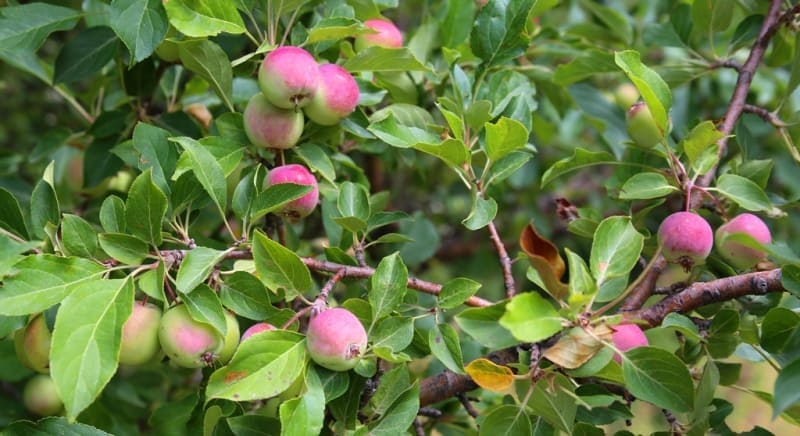
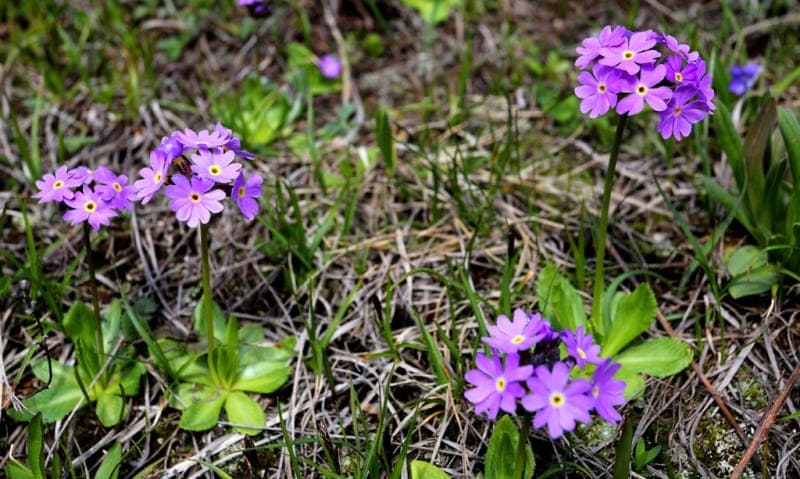
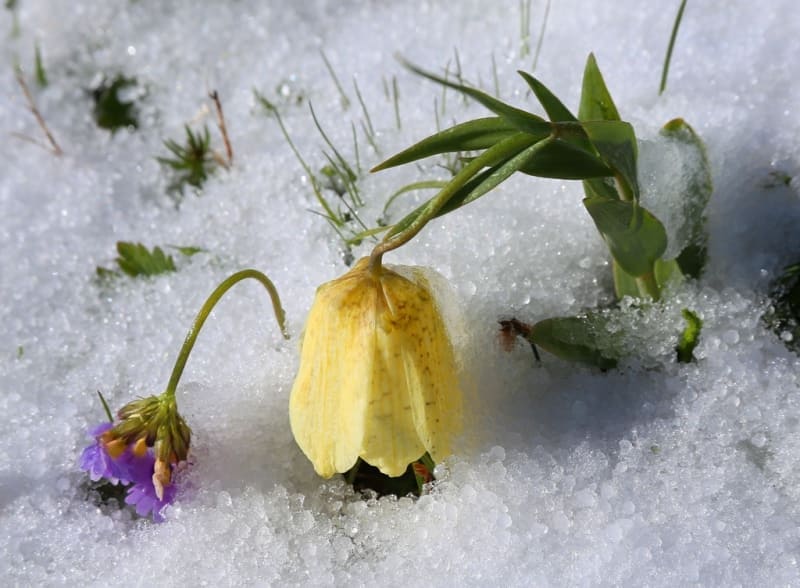
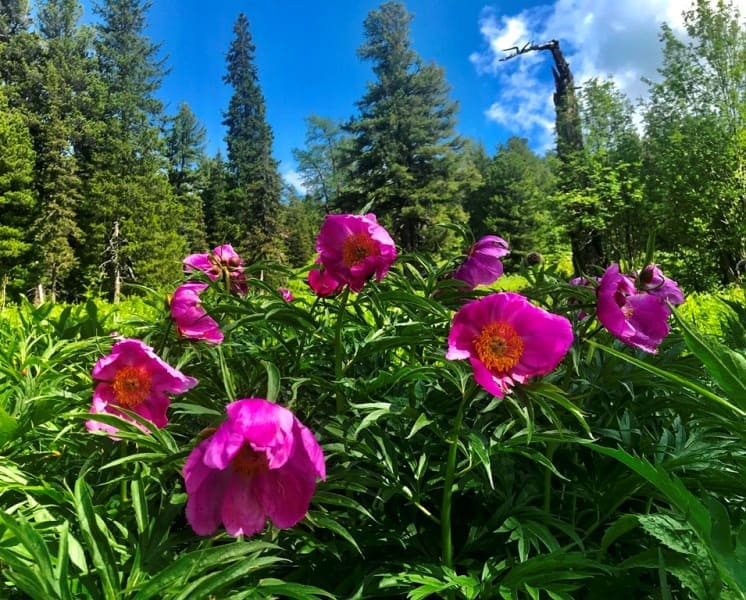
Authority:
“Management plan of the RSU “Zhongar-Alatau State National Natural Park” for 2022 - 2026. http://zhongaralatau.kz
Photos by:
Alexander Petrov.







